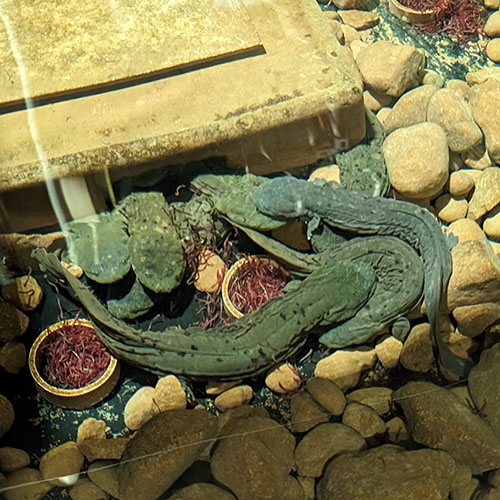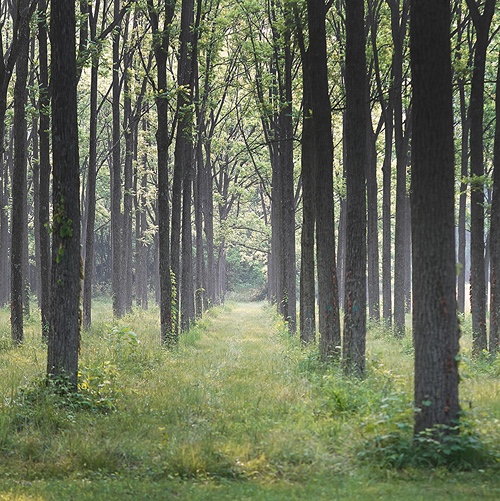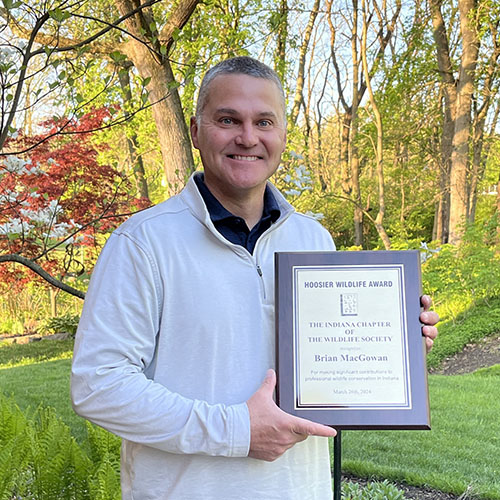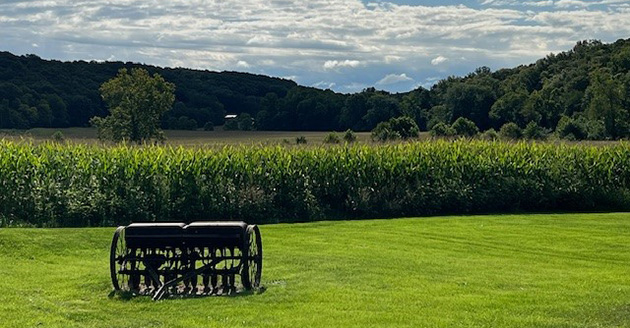Purdue Agriculture Exposure: something about Purdue Agriculture’s distinct tradition of transforming the great outdoors into a living, interactive classroom ignites a sense of wonder in students no campus lecture can match.
For nearly 40 years, Forestry and Natural Resources students have spent five weeks each summer among the national forests and pristine lakes of Michigan’s Upper Peninsula, learning from some of Purdue Agriculture’s leading faculty. While many schools have scaled back their summer camp programs, Purdue has expanded its hands-on, practical field experience.
Here in the Upper Peninsula of Michigan, there is an abundance of diversity. Students get to work with more species than they’ve probably ever seen in their lives.”
- Laura Fehling, Summer Practicum Director
Songlin Fei (below), professor and Dean’s Chair of Remote Sensing in the Department of Forestry and Natural Resources, led forestry majors off-camp to a wooded 200-acre plot to conduct a forest inventory and assessment. Using compasses to navigate, the students split into rows to try their hand at different sampling methods, tools and ways of taking inventory.
Far from the image of the lone forester, students worked in an experimental and collaborative method, calling out measurements to fellow group members and relaying what they discovered with other groups.
After they returned to camp, the data students collected was entered into a forest inventory project designed to teach the future foresters how to accurately assess a plot of land and, by trial and error, the best methods to do so.
Make a plan, put it into action, see how it works… then revise and try again. This is to prepare you all for the real world.”
- Songlin Fei
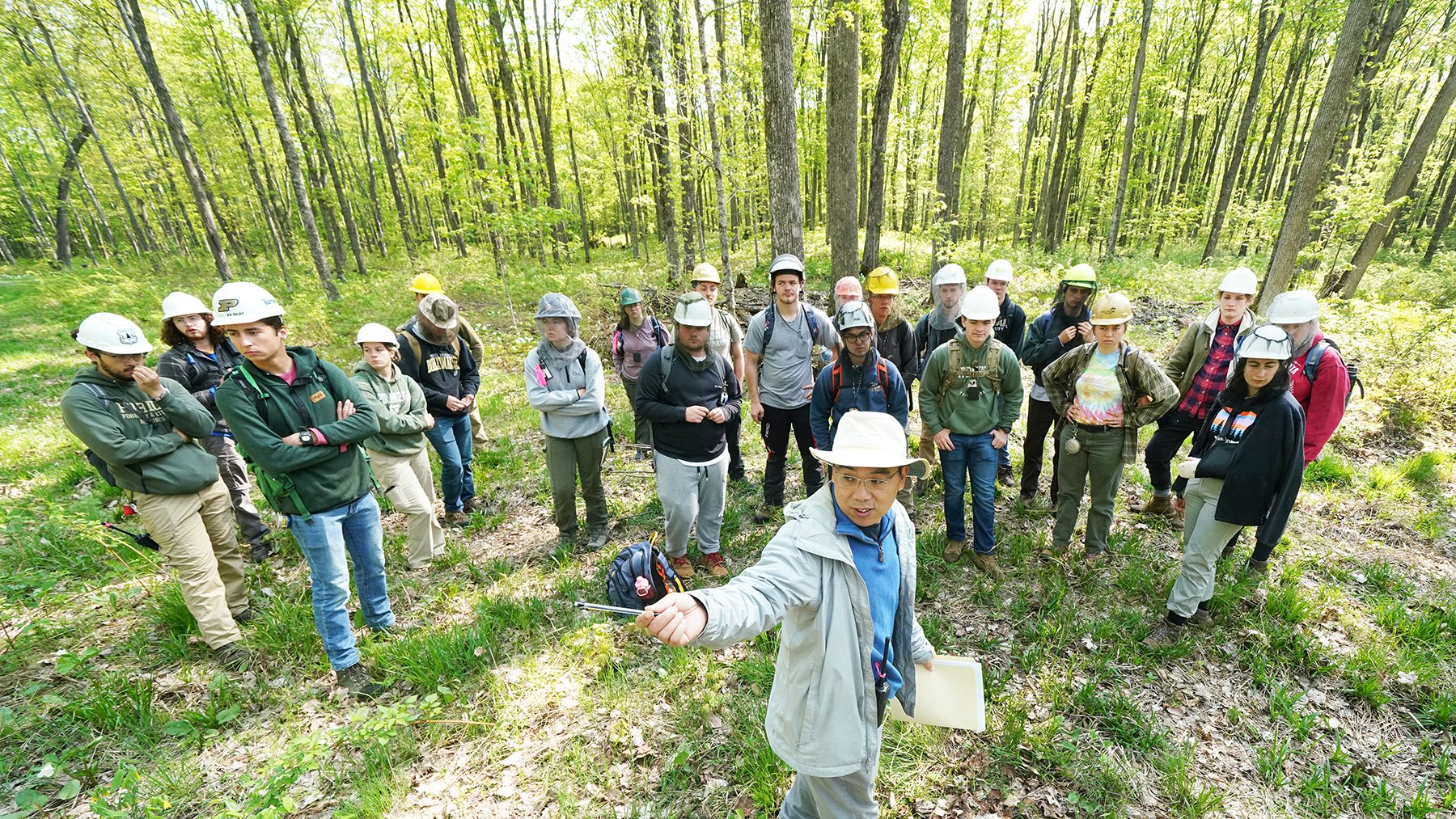
Purdue is one of the lucky few schools in forestry and natural resource programs that do something like this. You get to meet all these people from different parts of FNR that you can connect with later in life, to exchange information and share knowledge with. It builds your community for the future.”
- Harrison Sylvester, wildlife major
At the beginning of week three, Barny Dunning (below), professor of wildlife ecology in the Department of Forestry and Natural Resources, prepared wildlife majors for the week’s unit focus: birds. Other weeks offered instruction on small mammals and herptiles (reptiles and amphibians).

The chance to band their own bird and set it free by hand lured the college students out of bed at the break of dawn. After learning how to properly set mist nets the previous afternoon, students carefully unfurled the delicate webbing and held their breath.
After only a few minutes, birds began to fly into the nets: American Robins, American Redstarts, Baltimore Orioles and even a mystery species that faculty and students worked together to identify. After several demonstrations, each student gingerly untangled a bird, identified the species, recorded data, banded and released it. In their future careers, banding will be a common practice for research and wildlife management.
It was really beautiful to be up with the sun and the birds. It’s not something you typically get to do every day.”
- Anela Hill, wildlife major
Free time also provided opportunities to practice skills learned in class, or find a quiet space for studying, like Leah Griffin (above). A group of wildlife majors led a post-dinner expedition to a swampy area of camp to search for herptiles— only slightly too early for frogs, which are most active in the evening.
Several overturned logs later, some empty-handed students groaned in frustration.
The birds are laughing at us.”
- Joe Ogas, wildlife major
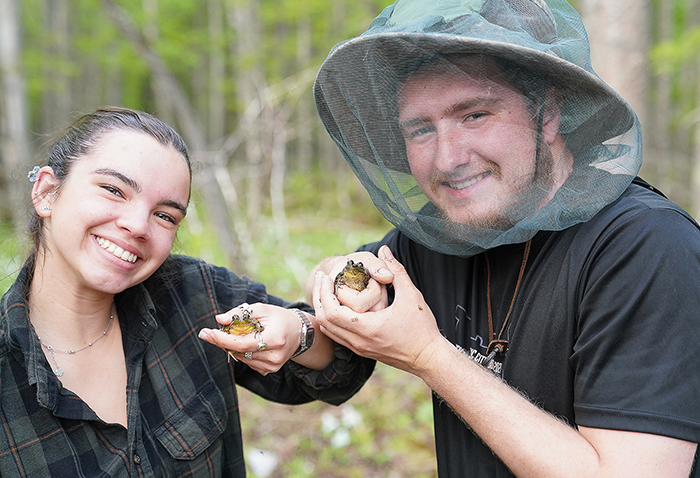
Finally, a triumphant “we got one!” sent the group to gather around the first catch of the night, cradled in one of the student’s palms. It’s an American Toad, a bold breeder that produces a foul-tasting compound that helps deter predators.
Students in aquatics sciences also practiced common techniques for monitoring and research. Tomas Höök, professor of forestry and natural resources and director of Illinois-Indiana Sea Grant, demonstrated different sampling tools and methods as students compared the physical, chemical and biological conditions of three local lakes: Hagerman, Ottawa and Bass.
Samples were brought back to the camp’s laboratory to be sorted and frozen for isotope analysis. By analyzing the temperature, dissolved oxygen levels and invertebrates found in the sediment and shores of each lake, students could observe how land use affects lake chemistry and water quality over time and visualize animal communities the lakes support.
Most kids are interested in the larger marine or aquatic life, but I’m the invertebrates guy. In the future, I want to study how sea surface temperatures affect zooplankton, so we can see how climate change will affect our oceans over time.”
- Harrison Reeves, aquatic sciences major
The academic modules often include final projects, like wildlife’s field journals. During birding week, students listed birds seen and heard in journals alongside personalized notes, sketches and photographs.
After a lesson in proper binocular use, birders set off with journals in hand to record different species observed around camp. While the task may have first felt like looking for a needle in haystack, as students learned to focus on what they hear, each species’ song was identified apart from the chorus.
Birding is about ninety percent what you hear, and ten percent what you can get your binoculars on.”
- Patrick Ruhl
In addition to hands-on labs at camp, the aquatic sciences program took advantage of the nearby Great Lakes and set off on several field trips around the region. Students visited Marquette to learn about mining and contamination in lentic (lake) systems and toured a Michigan DNR fish hatchery to learn about fisheries management.
Suited up in waders with nets ready, aquatic sciences majors ventured into the coastal marshes of Lake Michigan near Escanaba to practice seining. Working together, the students cast a large net to catch fish, which were identified and recorded to observe how species differ from coastal marshes to lakes.
These are job experiences we might get one day, so it’s nice to see what we could possibly do with our futures. Learning these skills now gives us a lead to get better jobs."
- Megan Merryman, wildlife and aquatic sciences student
On the last week of Practicum, forestry students returned to campus to learn skills in urban forestry. Students worked with industry professionals to learn how to operate digital tree management tools, such as herbicide spray technology and sensors to assess tree health. A lesson in tree climbing and a chance to operate a 72-foot arborist crane helped future foresters practice reaching the tree canopy.
Practicum gives you a sample of what your career will be like if you continue down this path. It’s hard work, a lot of group work, collaboration… But it’s worth the effort. It’s invaluable.”
- Leah Griffin, forestry major
For full article, photos and videos view Purdue Agriculture Exposure.
Learn more about Purdue Forestry and Natural Resources Summer Practicum.

